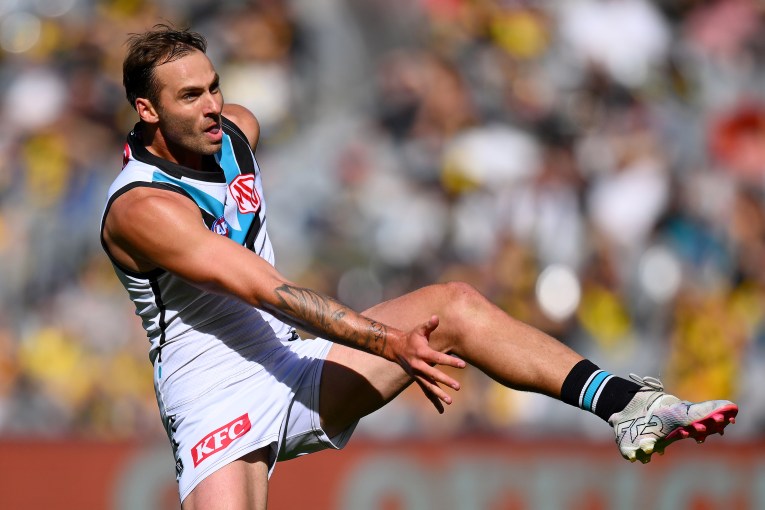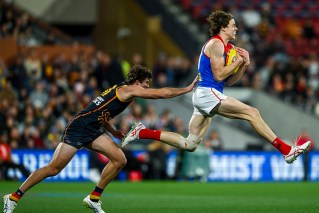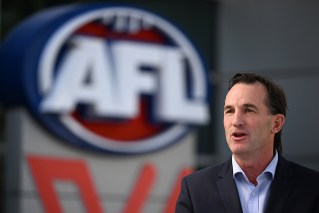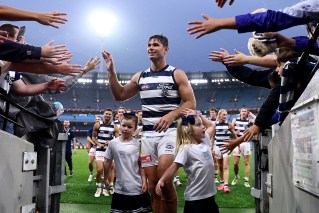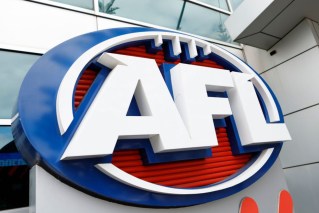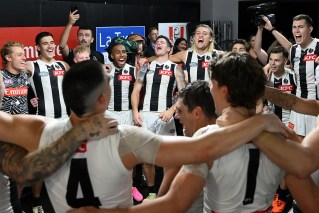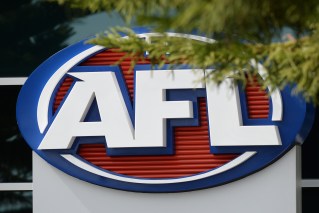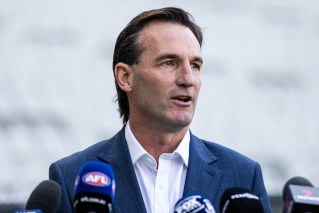Even poor AFL clubs can enjoy finals glory

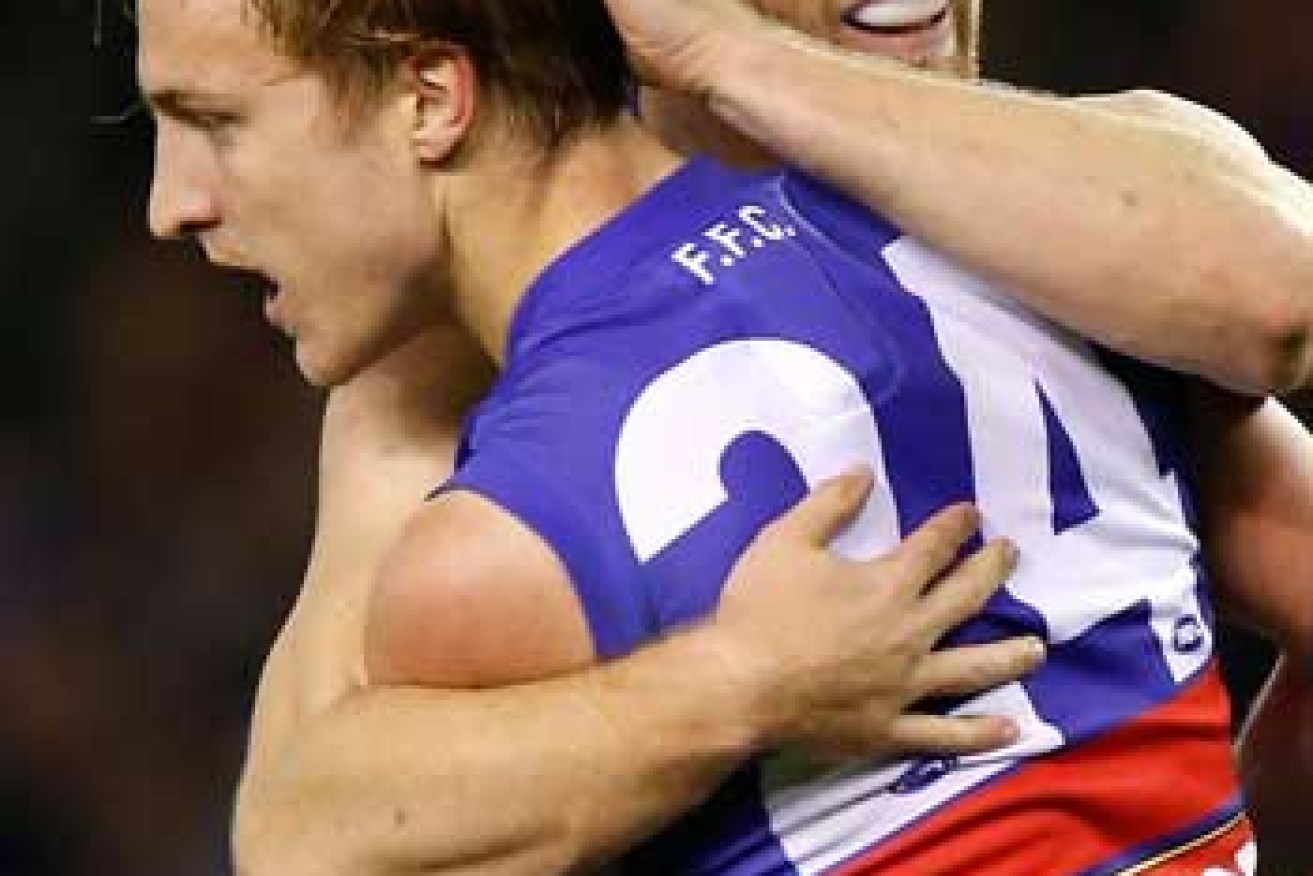
The Dogs are gearing up for their first finals campaign since 2010. Photo: Getty
It’s footy finals time and once again we see the rich clubs making the finals, where they have a chance to dominate the back pages, sign more members, sell more merchandise, pocket the big prize money, and grind the poor clubs into the ground.
Right?
Not exactly.
The AFL club with the most members (and a whopping $37 million in the bank) is Collingwood.
• 400 and out: Dustin Fletcher retires
• Martin Blake picks his All-Australian team
• Who are the big losers in the AFL’s money wars
They make over $10 million in membership revenue per year. The team finished in the bottom half this year.
Players will probably spend September growing fat on Thai beer.
In the thick of finals action is the Western Bulldogs, a scrimping pauper of a club with barely $2 million in membership revenue to rub together.
The top club, Fremantle, has half the financial assets ($10 million) of the second-top club, the West Coast Eagles ($23.4 million).
Fremantle’s $10 million in the bank is less than Carlton ($11.6 million), who lost 18 of their games and finished on the bottom of the ladder.
The AFL gives you a chance no matter how fat your wallet. But that chance is always at risk.
Don’t get the impression financial success doesn’t matter.
Ask the Fitzroy Lions what can happen if you win three matches in two seasons and run out of cash at the same time. Or the South Melbourne Swans.
Wins get members, members bring money, money can breed success.
The divergent paths of Melbourne and Hawthorn illustrate this well.
In the past 20 years, the Hawks have won three premierships, while the Demons have “won” three wooden spoons.
This matters for memberships. Demons fans drift away and new AFL converts can’t see any reason to choose them.
The effect can be long-lasting. Memberships are persistent as fandom spreads through families and networks of friends.
Collingwood’s record as the most supported club in the league is doubtless due to their league-best 43 grand final appearances and (league second-best) 15 flags. That will make them a lot of money for a long time.
But if this was the only thing that counted, Geelong would not have beaten Collingwood in the 2011 grand final.
This matters a lot.

St Kilda came within a whisker of winning premierships in both 2009 and 2010. Photo: Getty
Despite the weight of history, the little guys still keep making the finals. In 2010 the mighty Collingwood played one of the least-supported clubs in the league – St Kilda – in the Grand Final and took two tries to beat them.
This is what makes AFL compelling. It’s the great Australian dream in miniature.
No matter what club you’re born into, you’ve got a chance. You’re not going to be relegated to some B-league and never show up on TV. You can – maybe – be there for ultimate glory.
But that equality depends on the whims of the AFL. The fair go is at risk, according to economist Jeff Borland.
“In the mid-1990s and early 2000s the relation between clubs’ spending and their performances was too small to be accurately measured,” Professor Borland told CNBC last year.
“But by the late 2000s the relation was stronger and had become statistically significant.”
He argued in 2014 that the AFL should improve its equalisation policies and endorsed the new draft rules this year.
So yes, success does sometimes breed success.
But luckily there are other ways to glory. Smart recruiting, a bit of luck, a great coach, and of course the AFL’s comprehensive set of equalisation policies – the draft, club payments, the father-son rule, etc.
Those equalisation policies are key.
The fact the league is equal is reinforced every time Collingwood or West Coast finishes out of the eight (four instances in the last three years). An equal competition is what keeps supporters hanging on. It’s what helps make the AFL one of the most intensely supported football codes in the world.
Close games are what supporters crave. [See more economic research on this here]
The AFL’s prize money for the finals is a great example of why the league is even.
• The winner of the flag in 2014 got $1.2 million. That’s less than 10 per cent of what the AFL handed out to St Kilda in 2014.

The Dogs are gearing up for their first finals campaign since 2010. Photo: Getty
• Runner-up got $660,000;
• Third and fourth got $330,000;
• Fifth and sixth got $110,000; and
• Seventh and eight got just $71,500.
These are small sums. Almost tokens really. They prove it’s not about cash. It’s about glory.
(Sponsors can have clauses promising extra payments for getting into the finals. That could diminish the equalisation effect.)
Despite the influence of sponsors, clubs are after wins not money.
Unlike the NBA and the Premier League, which boast billionaire owners, they’re mainly member-owned, or owned by the local football association.
Experiments with private management have all ended in disaster. In the 1980s the Sydney Swans were owned by a consortium led by Dr Geoffrey Edelsten.
The club is now in safer hands.
In 2004 a sports economist did a study that showed AFL club management is not profit-maximising. It’s win-maximising.
That’s what members want, no matter what team they barrack for. They keep showing up for the chance to sing the club song – preferably at the end of September.


